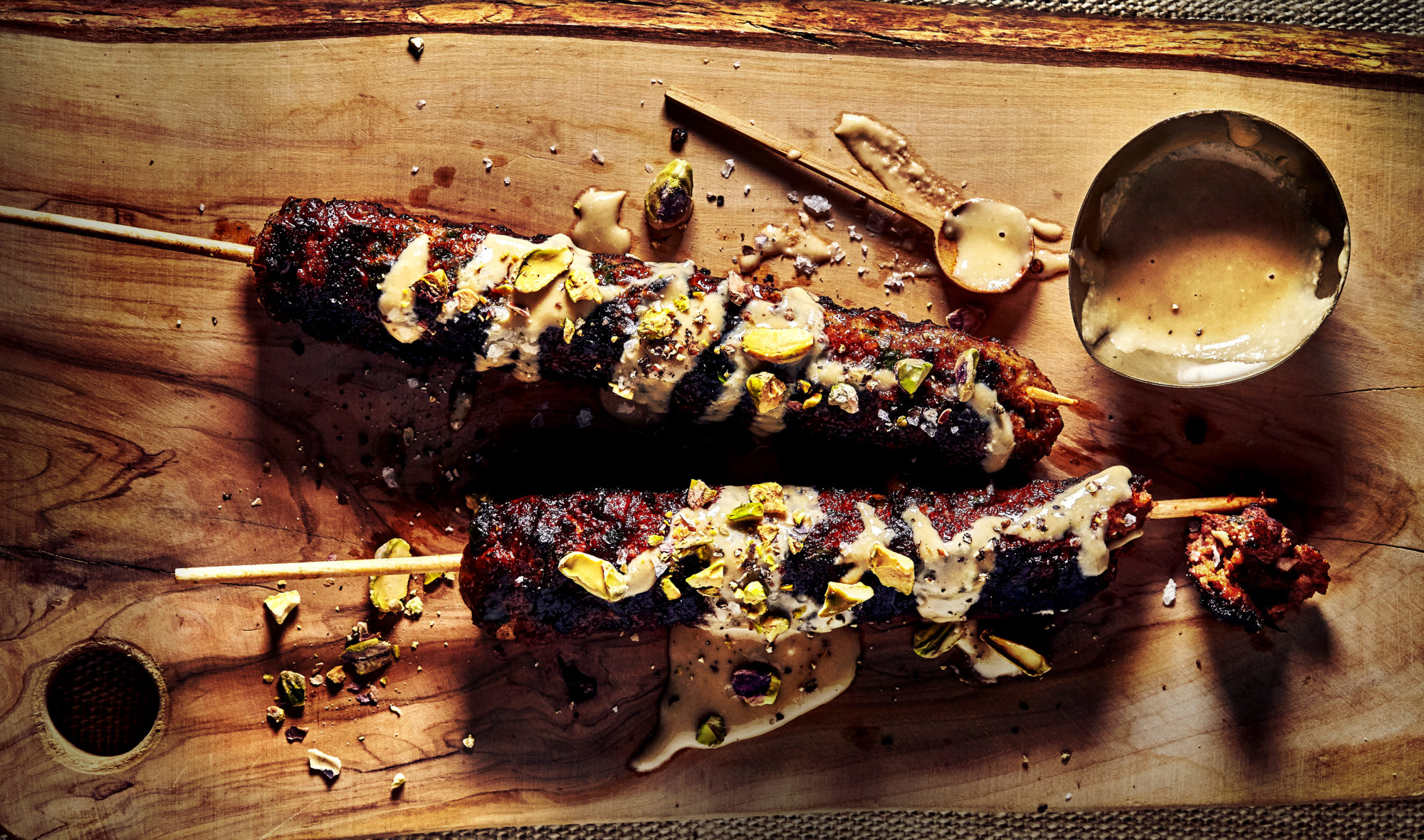
Join PN Level 2 for about $6/day! Plus, FREE Bonus worth $697! (This week only.)

Tahini is a runny, beige paste made from toasted, hulled sesame seeds. Tahini is a key ingredient in hummus, which is the way most North Americans are exposed to this ingredient. Although it is not quite mainstream in North America, the use of tahini is widespread in the Middle East. Most tahini is made from white sesame seeds, although it can also be made with black sesame seeds, which will yield a dramatic-looking tar-like paste. Both regular and black tahini have a creamy, deeply roasted nutty flavor with a subtle hint of bitterness. In addition to its rich flavor, tahini is also nutrient-rich, being a good source of copper, manganese, calcium, and iron. Tahini is a versatile culinary ingredient that is adaptable to both sweet and savory recipes - and c’mon, we dare you to stray from hummus and try something new.
Tahini is a paste made from ground sesame seeds. It’s like peanut butter, except it’s made with sesame seeds instead of peanuts.
Although tahini may sound like an exotic ingredient, you’ve probably already eaten it before. Ever heard of hummus? Of course you have. Tahini is a key ingredient.
Tahini is used in many other recipes, and it’s a particularly popular ingredient in Middle Eastern cuisine, where it is used to make the roasted eggplant dip baba ghanoush, and the sesame and honey based fudge-like dessert, halva.
Sesame paste is also used in other global cuisines such as in sauces for Vietnamese noodle dishes or mixed with aromatic spices in Indian curries. In the aisles of Greek supermarkets, tahini can even be found in jars combined with cocoa and honey, sold as a decadent spread for toast.
The vast majority of tahini is made with white sesame seeds, although tahini can also be made from black sesame seeds. Black sesame tahini has the same characteristic nutty flavor of regular tahini, except that is has the dramatic appearance of black tar.
Most tahini is made from hulled and toasted white sesame seeds, which creates a sticky-smooth beige paste, not unlike runny peanut butter.
Tahini has a rich, creamy, deeply roasted nutty flavor with a subtle hint of bitterness.
One tablespoon of tahini (about 15g) has 89 calories, 2.6g protein, 8.1g of fat, 3.2g of carbohydrates, 1.4g fiber, and 0.1g sugar. Tahini is an excellent source of manganese and copper, and a good source of calcium and iron.
Tahini is widely available at most larger grocery stores, Middle Eastern food stores, and health food stores.
Tahini is sold in jars and need only contain one ingredient: sesame seeds. Some brands may add extra oils, salt, or other ingredients, although this is not necessary.
Check the expiration date on the package to assess freshness, and also taste it. Good quality, fresh tahini will taste toasty and nutty, with only the slightest hint of bitterness. If your tahini tastes distinctly bitter or musty, it’s likely rancid and past its prime.
Tahini is also occasionally available in bulk, where consumers can serve themselves desired amounts in containers. In these cases, shop at clean stores with high product turnover and covered bins.
Although tahini is relatively shelf-stable, due to its high proportion of omega 6 fats (which are more fragile and prone to rancidity), it is recommended that you store it in the fridge, where it will keep for about six months. If you are going to finish your jar within a couple of months, a cool, dry cupboard is suitable too.
Tahini needs no special preparation and can be eaten straight from the jar with a spoon as a minimalist snack, spread on toast or crackers, or mix it with other ingredients to create delicious sauces, dressings, and desserts.

Spinach colors this tahini-based sauce a beautiful green. This sauce is incredibly versatile and goes well with all vegetables, and can be used as a drizzle, dip, or dressing.
Prep Time: 5 minutes Cook Time: 0 minutes Yield: 6-8 servings
Prepare your fresh vegetables as you wish. Cut them in desired shapes, roast them, grill them, or leave them raw.
Next, prepare the green tahini: Add spinach, tahini, oil, water, garlic, lemon, and seasoning to a blender or food processor and process until smooth.
Arrange prepared vegetables on a large plate or board and drizzle green tahini sauce over top, or pour it into a small bowl for dipping.
Store the leftover sauce (if there is any) in an airtight container for two to three days. This sauce is incredibly versatile and can work as a drizzle or dip for vegetables, as a dressing for salads, or oven over pasta!
Precision Nutrition’s Encyclopedia of Food expands every single month as we highlight new foods and showcase beautiful food photography. If you’d like to stay up to date, simply click this link. From there, we’ll send you a FREE copy of our recipe book. We’ll also let you know when new and delicious foods are added to the site.
Tahini is a runny, beige paste made from toasted, hulled sesame seeds. Tahini is a key ingredient in hummus, which is the way most North Americans are exposed to this ingredient. Although it is not quite mainstream in North America, the use of tahini is widespread in the Middle East. Most tahini is made from white sesame seeds, although it can also be made with black sesame seeds, which will yield a dramatic-looking tar-like paste. Both regular and black tahini have a creamy, deeply roasted nutty flavor with a subtle hint of bitterness. In addition to its rich flavor, tahini is also nutrient-rich, being a good source of copper, manganese, calcium, and iron. Tahini is a versatile culinary ingredient that is adaptable to both sweet and savory recipes - and c’mon, we dare you to stray from hummus and try something new.